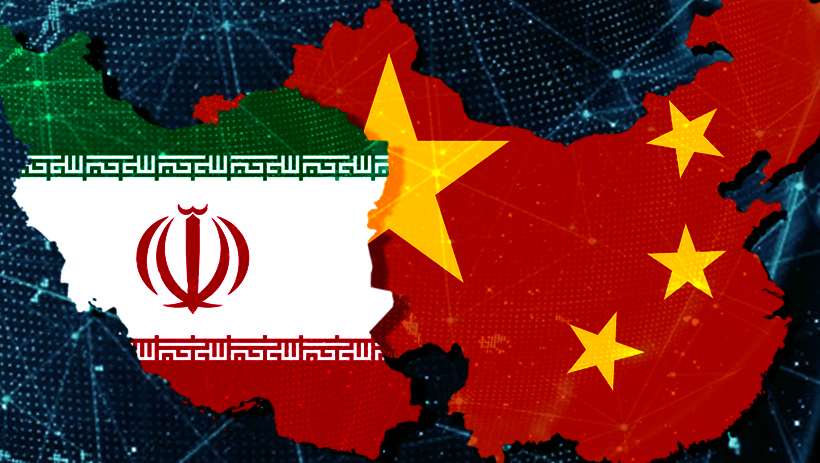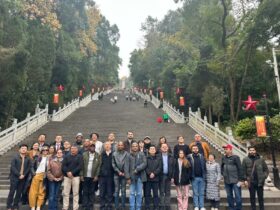Energy, mainly from oil exports, is one the main foundations on which Sino-Iranian relations are built. China’s growing economy needs energy from reliable sources, and Iran’s huge oil and natural gas reserves go a long way towards covering the surplus in demand. By 2017, the bilateral volume of trade amounted to around $37.2 billion – massively in China’s favor. China is Iran’s foremost trading partner. Over the past decade, the two countries have maintained their relationship, making China the largest oil consumer and the largest non-oil importer of Iranian products. In 2017, China imported 9% of its oil from Iran. Figures show that Iran exported 630,000 barrels of oil a day to China in 2017, and as of the first four months of 2018, oil supplies remain at the same level.
During the Ahmadinejad era, which brought about the “Look East” policy, Chinese energy firms became very active in Iranian oil and gas fields and petrochemical facilities. Such a shift in policy was no doubt prompted by the EU and US launched sanctions against the Iranian energy sector, in which large industry players such as Total and Petronas withdrew their presence from the country’s fields, leading to a drain in technology and knowledge.
SINOPEC signed a $2 billion agreement with Iran to develop the Yadavaran Oil Field in a 2008 Chinese Consortium over the development of Iran’s LNG capacities in the South Pars field, which is shared between Iran and Qatar. There was another major agreement to export 10 million tons annually and earn $20 million daily from the investment, but progress has stalled due to sanctions. Chinese firms involved in certain phases of the South Pars have also been struck by delays. This huge field alone accounts for 70% of the annual production of the 215 billion cubic meters of processed gas in Iran.
Phase 11 of the South Pars project is a crucial part of its development plan. It is currently suffering a 27 month delay in implementation. Such delays have resulted in more loss to Iran than can be calculated in terms of potential lost profits alone, given that Qatar is increasingly adept at procuring the products from the field. While Qatar has benefited from this common area for many years thanks to some of the world’s most advanced technology, there is concern that Iran’s readiness to exploit this common ground may become impossible. The contract for the development of phase 11 of the South Pars Common Field, worth $5 billion, was handed over to the Chinese CNPC in June 2009.
Within the framework of the two phases, the development of this border area can produce more than 600,000 barrels of oil per day. For this purpose, $12 billion of investment is needed. The Chinese company has invested only $200 million over three years, or less than 1.6% of the total investment, and has not taken any action to implement the first phase of the project until now.
Iran’s priority in increasing its oil and gas production capacity in such shared fields was a great chance for Chinese companies to sign agreements with Iran to develop shared oil and gas fields. The Azadegahn (North and South) fields shared by Iran and Iraq have also been struck by Chinese company delays, similarly to the delays in South Pars, improving Iraq’s ability to increase its own share of procurement.
After the signing of the 5+1 Agreement, Total and the CNPC Consortium signed an agreement with Iran to develop the South Pars 11th Phase, but after US withdrawal from the treaty with Iran, Total left South Pars, with the CNPC taking their remaining share. Total held 50.1%, while the CNPC held 30%, and the remaining 19.9% went to Iran’s PetroPars. Since Total’s departure, the CNPC now holds 80.1% of the agreement. The main question regarding the CNPC is whether it can supply the required technology and financial resources to develop this phase. It is expected that the pressure of the South Pars field will fall sharply over the next five years, and that the 1500 to 2000 tons of platforms on the field will need to be replaced with 20,000-ton platforms. The cost of building each 20,000-ton platform with compressors is estimated at around $2.5 billion, which neither Iran nor the Chinese have easily at their disposal. Iran had hoped that Total would deliver the technology to Iran, along with constructing the first large platform.
According to Iranian officials, Phase 11 is expected to turn the South Pars into a modern technology transfer hub. The most prominent strength of this development plan is to increase the international partnerships of Iranian companies as a way of transferring new technologies in various fields related to growth and harvesting equipment. The US withdrawal from the JCPOA, not to mention the imposition of new sanctions against Iran, has caused all major foreign companies to abandon negotiations. With the lack of movement from the Chinese, and the loss of Total’s potential technological expertise – as well as resources – Iran has lost much of the momentum generated from its earlier progress. China has even opened its own oil-based facilities in Yuan to increase its presence on the oil market. Although the US objects to Chinese imports from Iran, it has few tools to dissuade Beijing from even this limited level of cooperation.
The most pertinent question, however, is how the CNPC will be able to resist US sanctions and risk losing the clientele of the US and allies that will no doubt feel pressured to fall in line with Washington. During the previous round of sanctions against Iran, major Iranian oil customers in Asia and Europe benefited from US sanctions and cut off about 20% of the Islamic Republic’s oil purchases every six months. This time, according to reports, these customers are eyeing possible exemptions. It is possible for China to decrease oil imports from Iran, but China is not interested in driving Iran out of its sphere by inflicting any real damage to its potentially profitable relationship with the country.

















Leave a Reply